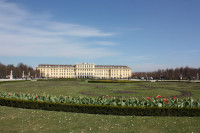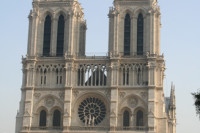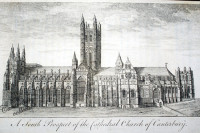Travel
Understanding the world of cathedrals: the Gothic Angevin or Plantagenet architecture

The Gothic Angevin architecture (Plantagenet Architecture) began in the Western part of France in the region called Anjou, more precisely in the town of Angers, which explains the term Angevin. Henry of Plantagenet was also Count of Anjou from 1154 until his death in 1189.
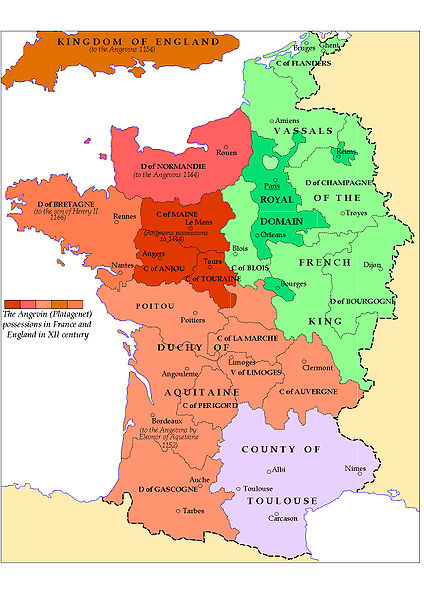
Lotroo – Angevin Empire 1154
This style is seen also in the Maine, Touraine and Poitou regions.
Some examples are the Cathedral St. Pierre in Poitiers, the Cathedral St. Maurice in Angers and the Cathedral St. Julien in Le Mans.
The influence of Gothic Angevin lasted roughly 100 years from about 1150 to 1250. It continued until after the death of King Henry of Plantagenet and the end of the Plantagenet control over French territories (from English Channel to the Pyrenees). In 1214, the Capetian regained control of most of all lost territories.
The term “monotonous exterior” has been used to describe the sacred sites of Plantagenet.

Henry II of Plantagenet – NPG
How the Gothic Plantagenet architecture was:
- Lighting is indirect. There are no windows to lighten up the central nave, restricting luminosity.
- The bulging-ribbed vaults are square, shaped like a dome (also called dominical vaults).
- The ribbed vaults are sculpted at each intersection.
- Consists mostly of a single nave. It could also have three naves of equal height, referred to as Hallenkirchen in Germany and Eglise-halle in France.
- The front has three doorways.
- Walls are thick (about 13 feet/3,9 meters) to carry the extremely heavy vaults. Enormous flying buttresses were used on the outside like in Tournai.
- The apse is always flat like in the Cathedral of Poitiers.
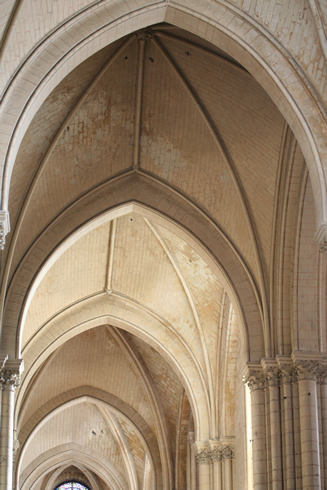
Bulging ribbed vaults of the cathedral of Poitiers (France)
This architecture style was in competition against Parisian Gothic (like in Reims and Paris) offering lighter vaults and much more direct light. As the Gothic Plantagenet style could not achieve that, it lost the competition.

